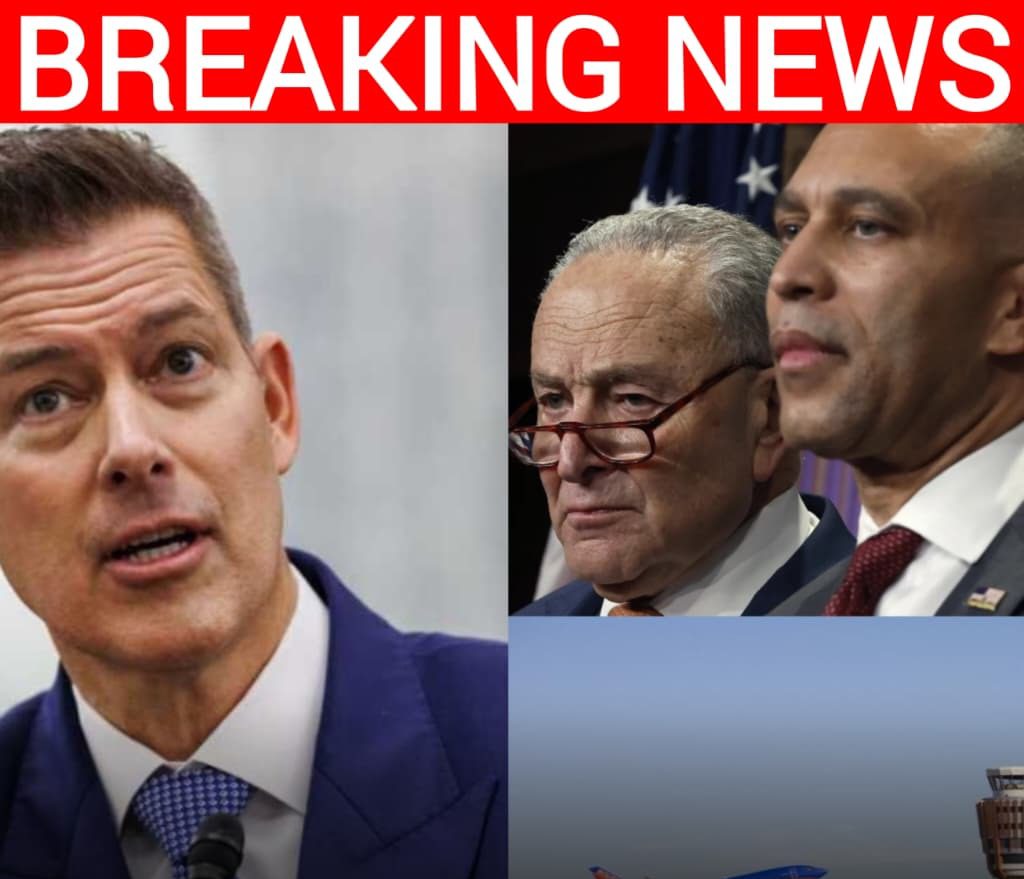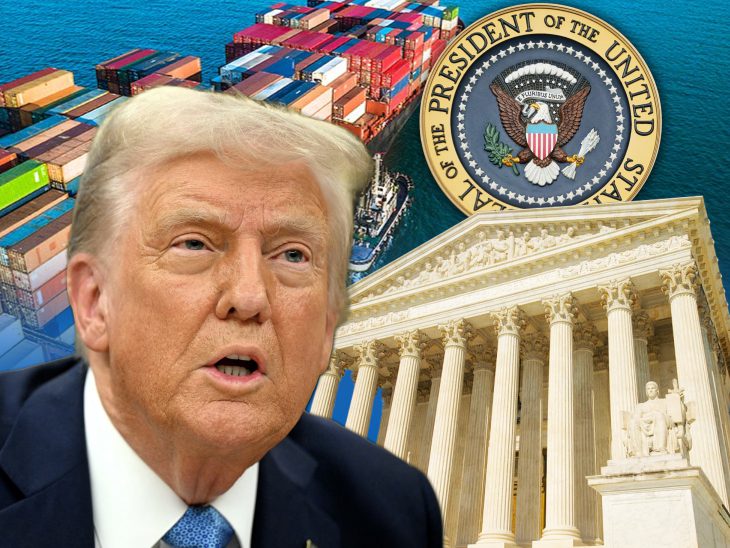U.S. Air Travel Faces “Mass Chaos” as Shutdown Deepens — Secretary Sean Duffy Warns Democrats’ Gridlock Could Force Nationwide Airspace Closures Within Days
As the federal shutdown drags into its fourth week, the warnings from Washington are becoming increasingly dire. Secretary Sean Duffy, speaking from the White House press briefing room on Monday, delivered perhaps the most alarming statement yet — that the United States could be forced to shut down parts of its airspace if Senate Democrats fail to reopen the government within days. His words, calm but grave, landed like a thunderclap: “If you bring us to a week from today, Democrats, you will see mass chaos.”

It was a moment that captured both the urgency and dysfunction of the current standoff. The shutdown, which began in mid-October after Senate Democrats blocked a Republican-led continuing resolution, has already sent ripples across the nation — but Duffy’s remarks marked a turning point. He warned that with air traffic controller staffing plummeting due to furloughs, the country was nearing a breaking point where safe operation of its skies could no longer be guaranteed. “You will see mass flight delays,” he said. “You’ll see mass cancellations. And you may see us close certain parts of the airspace because we just cannot manage it safely without enough controllers.”
According to the Federal Aviation Administration, the U.S. manages an average of 45,000 flights per day across more than 500 air traffic control facilities nationwide. Those towers are staffed by roughly 13,000 certified controllers — and as of this week, thousands have been sent home without pay. In many regional centers, the remaining skeleton crews are logging double shifts, some working twelve-hour days to keep critical routes open. But that’s not sustainable, Duffy emphasized. “We are asking men and women responsible for the safety of millions to work beyond human limits. It’s not fair to them, and it’s not safe for passengers.”

The data backs him up. During the last major shutdown in 2019, FAA statistics showed that flight delays surged by 27% nationwide, with more than 10,000 commercial flights impacted due to staffing shortages. By the third week of that shutdown, the Air Traffic Controllers Association formally warned of “systemic stress” in America’s aviation network. The only reason catastrophe was averted then was because temporary funding was restored — something Duffy and others say may not happen this time unless Congress acts fast.
Behind the crisis lies a familiar Washington gridlock. At the heart of the dispute is a $1.2 trillion spending bill, with Democrats refusing to advance it unless certain provisions on border security and energy policy are removed. Republicans, led by President Trump and House Speaker Mike Johnson, have refused to back down, insisting the spending must reflect the priorities of “real Americans,” not what Trump called “D.C. special interests.” The result has been a prolonged standoff that has shuttered federal offices, delayed paychecks for more than 800,000 employees, and frozen critical operations across departments from agriculture to transportation.
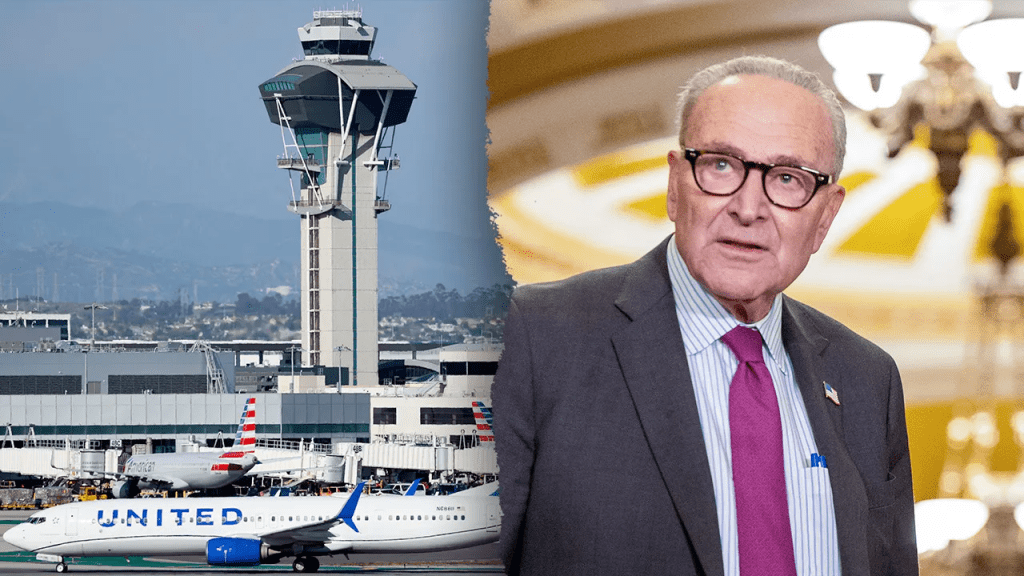
But nowhere are the consequences more visible — or potentially dangerous — than in the skies. Commercial airlines have already begun contingency planning for mass disruptions. Delta and United both confirmed they’re monitoring FAA communications and preparing to consolidate routes if tower operations are reduced. Southwest, which operates heavily in affected regional hubs, has warned customers of possible “severe cascading delays.”
The Transportation Department says over 20 major airports — including Chicago O’Hare, Atlanta Hartsfield, and New York’s JFK — are running with fewer than 75% of their normal staffing levels. Smaller regional airports in states like Wisconsin, Kentucky, and New Mexico are even worse off, relying on temporary tower management agreements to keep planes moving. “The system is stretched to its absolute limit,” one FAA supervisor told POLITICO anonymously. “If just one more center goes offline, the delays could compound in a matter of hours.”
Secretary Duffy, appointed earlier this year after a Senate confirmation fight, has become one of the administration’s most visible figures during the shutdown. A former congressman and Fox News commentator, he has long been a vocal critic of bureaucratic overreach, but his tone Monday was markedly somber. “This is not about politics anymore,” he said. “This is about safety. If you can’t fund the government, you can’t fund the people who keep planes from colliding midair.”
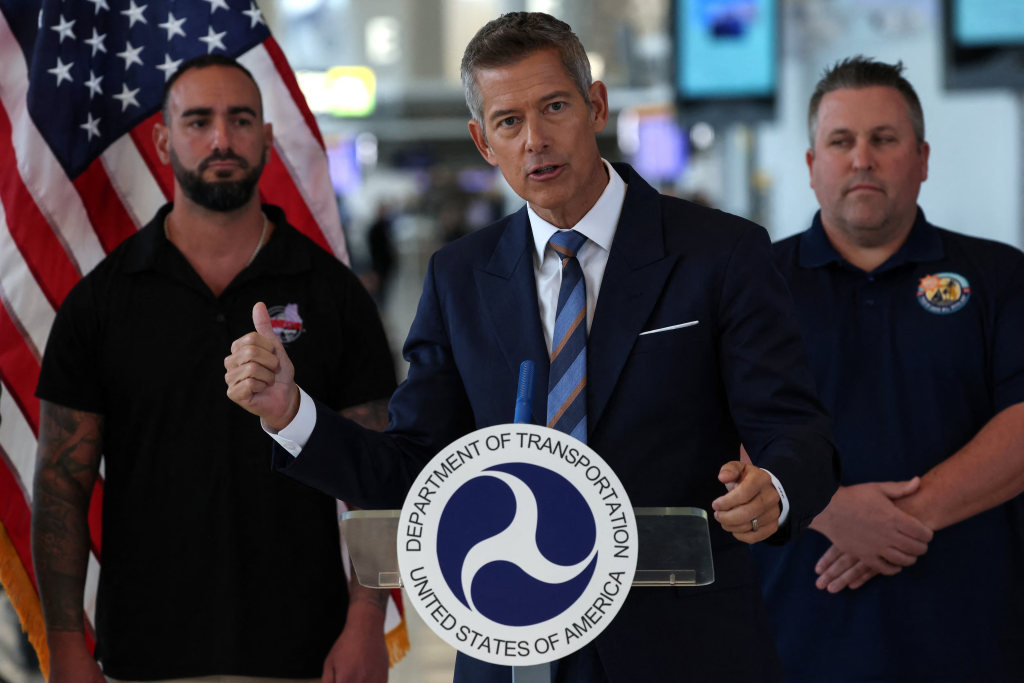
Still, his words sparked immediate backlash from Democratic leaders. Senate Majority Leader Chuck Schumer accused Duffy of “fearmongering” and using “scare tactics” to push through partisan spending demands. House Minority Leader Hakeem Jeffries echoed the sentiment, calling it “reckless rhetoric from a party holding the economy hostage.” But Duffy pushed back firmly, telling reporters after the briefing that the facts “speak for themselves.”
“The Democrats shut the government down,” he said. “They’re the ones refusing to come to the table. If they think protecting political pride is worth shutting down airspace, that’s on them — not on us.”
Industry analysts, however, agree the threat is real. Air traffic control requires constant, round-the-clock staffing, with even small gaps creating exponential safety risks. “If you lose just 10% of personnel, that’s a serious efficiency hit,” explained aviation consultant Mike Boyd. “But if you lose 25% or more, you can’t operate at scale. You start cutting routes, grounding flights, and eventually, yes — closing airspace.”
Travelers have already begun to feel the early effects. As of Tuesday, more than 2,300 flights nationwide had been delayed or canceled due to controller shortages and technical backlogs. Major carriers are urging passengers to check schedules regularly, as FAA’s regional command centers shift to emergency staffing protocols. “It’s controlled chaos right now,” Boyd said. “The FAA is juggling safety with politics — and that’s never a good mix.”
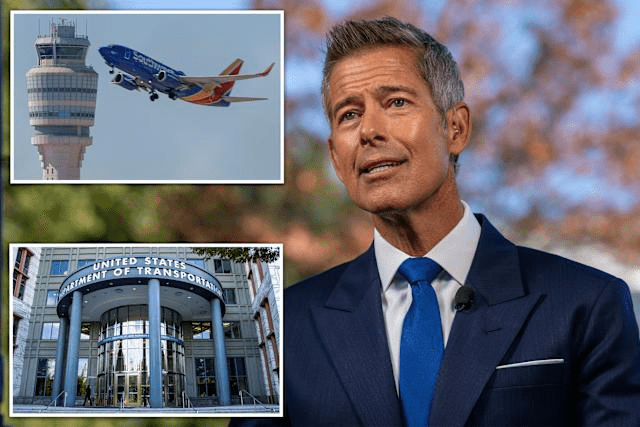
The human toll is also growing. Many furloughed FAA employees are now struggling to pay rent or mortgage payments, with union leaders warning of mass resignations if the shutdown continues. The National Air Traffic Controllers Association (NATCA) issued a rare joint statement with pilots’ unions this week, urging Congress to act before “irreversible damage” occurs to the aviation workforce. “Air traffic controllers can’t simply be replaced,” the statement read. “It takes years of training and certification to do this job safely.”
President Trump, addressing the crisis from Mar-a-Lago, placed the blame squarely on Senate Democrats. “They are putting politics over people,” he said. “They’d rather cripple the country than give us a secure border or balanced spending. But we’re not backing down — we’re fighting for America.”
The showdown has exposed a larger divide between two competing visions of government — one focused on restraint and prioritization, the other on expansive social funding. And with the stakes now extending to the skies themselves, it’s no longer an abstract argument. The situation has drawn comparisons to the 1981 air traffic controller strike under President Reagan, when more than 11,000 controllers were fired for walking off the job. But this time, Duffy emphasized, the problem isn’t defiance — it’s depletion. “We have the best professionals in the world,” he said. “They just can’t work without pay forever.”
As the weekend approaches, federal agencies are bracing for what insiders are calling “the tipping point.” If the shutdown extends into next week, FAA contingency plans may include halting all non-emergency flights over certain air corridors, particularly in congested regions like the Northeast. Cargo flights, essential for supply chains, could also be impacted. That, economists warn, could ripple through the broader economy, disrupting everything from holiday shipping to pharmaceutical distribution.
Markets have already shown signs of unease. Airline stocks dipped sharply following Duffy’s remarks, with American Airlines down 3.2% and Southwest falling nearly 5% by market close. Analysts say continued instability could trigger a broader selloff, particularly if consumer confidence drops amid travel uncertainty.
But beyond the numbers, there’s a deeper sense of frustration — a feeling that Washington has once again pushed ordinary Americans to the brink for the sake of political theater. At airports across the country, weary passengers and overworked staff are caught in the middle. “We just want to do our jobs,” one controller said in tears during a union call. “We’re patriots. But this is breaking people.”
Whether or not Duffy’s dire warning becomes reality will depend on what Congress does in the coming days. But his message was unmistakable: the clock is ticking, and the consequences are national. “This isn’t about blame anymore,” he said, closing his briefing. “It’s about responsibility. And right now, that responsibility lies with the Democrats to reopen the government — before America’s skies go dark.”
